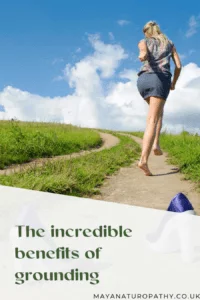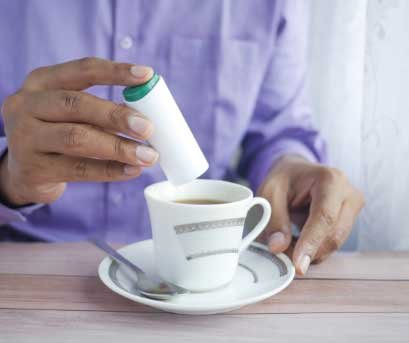I love grounding. It’s a simple, easy, fun, and free method everyone can use, right now, to
improve their health.
What is it?
Grounding, also known as earthing, is literally reconnecting to the Earth: meaning walking
on the soil. It requires direct skin contact with the Earth, such as with bare feet or hands, or
using various grounding systems. By doing this, we are reconnecting the conductive human
body with the Earth’s natural and subtle surface electric charge. Some research refers to this
as electric nutrition.
This electric connection to the Earth has been lost with our modern lifestyle, causing what
has been dubbed by researchers “electron deficiency syndrome”, which is thought to be a
significant cause of multiple health disorders. The lost contact with the Earth may
contribute to electrical imbalances, a build-up of disruptive static electricity (positive
charges), and an unrecognized electron deficiency in the body, and with it, vulnerability to
dysfunction, disorder, and disease.
The Earth is affected electrically by lightning strikes, solar radiation, and atmospheric
dynamics, all of which endow its surface (as well as the surface of bodies of water) with a
continually renewed supply of free electrons, giving the ground a natural negative electric
charge. When we sleep, walk, and touch the soil, it is hypothesized that we transfer these
free electrons into the body, resulting in physiological changes.
Sounds simple enough, right?
It is!
So what are the effects of this grounding?
Reconnection with the Earth’s electrons has been found to promote intriguing physiological
changes, and subjective reports of wellbeing. Grounding helps stabilize the physiology of the
body, reducing inflammation, pain and stress, improving blood flow and lymphatic return to
the heart, improving sleep, and improving wellbeing.
The research on grounding covers areas spanning from improving autonomic nervous
system functions in premature infants, to improving inflammation following injury,
improved sleep, normalized cortisol rhythm (and shifting the nervous system from
sympathetic to parasympathetic activation), reduced blood viscosity, and so much more.
Really, there’s very little downside to applying this technique. Walk outside barefoot on the
grass, sand, or stone. Do your gardening while barefoot. Play with your kids outside on the
grass, barefoot. Lie down on the beach.
Have fun!
I love grounding. It’s a simple, easy, fun, and free method everyone can use, right now, to
improve their health.
What is it?
Grounding, also known as earthing, is literally reconnecting to the Earth: meaning walking
on the soil. It requires direct skin contact with the Earth, such as with bare feet or hands, or
using various grounding systems. By doing this, we are reconnecting the conductive human
body with the Earth’s natural and subtle surface electric charge. Some research refers to this
as electric nutrition.
This electric connection to the Earth has been lost with our modern lifestyle, causing what
has been dubbed by researchers “electron deficiency syndrome”, which is thought to be a
significant cause of multiple health disorders. The lost contact with the Earth may
contribute to electrical imbalances, a build-up of disruptive static electricity (positive
charges), and an unrecognized electron deficiency in the body, and with it, vulnerability to
dysfunction, disorder, and disease.
The Earth is affected electrically by lightning strikes, solar radiation, and atmospheric
dynamics, all of which endow its surface (as well as the surface of bodies of water) with a
continually renewed supply of free electrons, giving the ground a natural negative electric
charge. When we sleep, walk, and touch the soil, it is hypothesized that we transfer these
free electrons into the body, resulting in physiological changes.
Sounds simple enough, right?
It is!
So what are the effects of this grounding?
Reconnection with the Earth’s electrons has been found to promote intriguing physiological
changes, and subjective reports of wellbeing. Grounding helps stabilize the physiology of the
body, reducing inflammation, pain and stress, improving blood flow and lymphatic return to
the heart, improving sleep, and improving wellbeing.
The research on grounding covers areas spanning from improving autonomic nervous
system functions in premature infants, to improving inflammation following injury,
improved sleep, normalized cortisol rhythm (and shifting the nervous system from
sympathetic to parasympathetic activation), reduced blood viscosity, and so much more.
Really, there’s very little downside to applying this technique. Walk outside barefoot on the
grass, sand, or stone. Do your gardening while barefoot. Play with your kids outside on the
grass, barefoot. Lie down on the beach.
Have fun!




